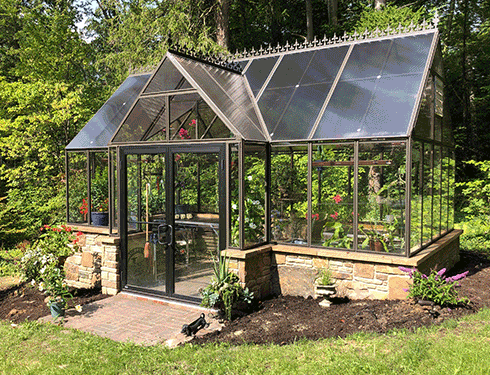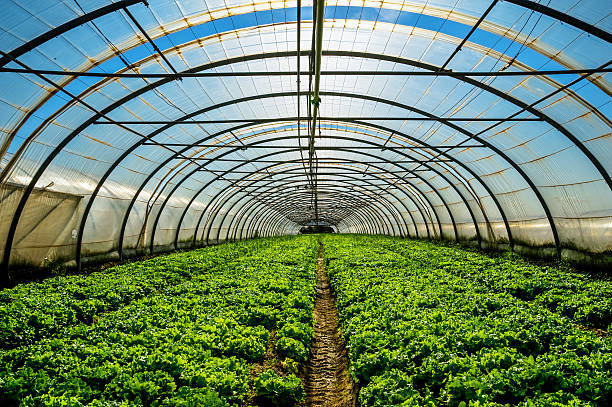The Future of Greenhouses: Innovations in Lasting Farming
Are you curious regarding the future of greenhouses and exactly how they are reinventing sustainable farming? Look no further! In this short article, we will certainly discover the exciting advancements that are leading the method for a greener and extra efficient farming industry. From sophisticated climate control systems to upright farming methods, water-efficient watering approaches, renewable resource assimilation, and wise data analytics, these improvements are changing the way we expand our food. Get prepared to uncover the future of lasting agriculture in greenhouses!
Advanced Environment Control Solution
To accomplish optimal expanding problems, you can count on the improvements in greenhouses with sophisticated climate control systems. These systems have actually revolutionized the way we cultivate plants, providing a controlled setting that contributes to plant development. With these innovative systems, you can currently control temperature, humidity, light levels, and also CO2 concentrations to develop the ideal problems for your plants to flourish.
Among the vital attributes of these innovative environment control systems is their capacity to regulate temperature level. By utilizing sensing units and automated controls, the greenhouse can change the temperature based on the specific needs of the plants. This ensures that they are never ever revealed to extreme warmth or cool, which can be damaging to their development.
Moisture control is an additional essential facet of these systems. By preserving the suitable moisture degrees, you can prevent problems such as mold, mold, and illness from impacting your crops. These systems can likewise manage the amount of light that gets to the plants, guaranteeing that they obtain the ideal quantity for photosynthesis.
Moreover, progressed environment control systems can even control CO2 concentrations. By raising the degrees of carbon dioxide in the greenhouse, you can boost plant development and efficiency. This is particularly valuable in locations with reduced all-natural carbon dioxide levels.
Vertical Farming Techniques
One important vertical farming strategy is utilizing piled growing systems. Stacked expanding systems are commonly utilized in metropolitan areas where area is limited.
One prominent approach is called upright hydroponics, where plants are grown in nutrient-rich water without soil. This method is extremely effective as it minimizes water use by approximately 90% compared to traditional farming approaches. Additionally, considering that the plants are expanded inside, they are safeguarded from pests and diseases, minimizing the demand for pesticides.
One more method is aeroponics, which involves suspending the plant origins in a haze or air setting. This approach allows for ideal nutrient absorption and oxygenation, causing faster growth and higher returns. Aeroponics also utilizes much less water than typical farming and can be applied in upright systems, making it a preferred choice for vertical farming.
Water-efficient Irrigation Methods
When it comes to executing water-efficient irrigation methods in sustainable farming,Making the most of water preservation is necessary. With worldwide water deficiency coming to be a pushing issue, it is crucial to establish ingenious methods that optimize water usage in greenhouse procedures.
One encouraging method is drip irrigation, which supplies water straight to the plant origins, lessening waste and evaporation. By using a network of tubes with little emitters, water is applied gradually and specifically, guaranteeing that plants obtain the needed moisture without excess overflow.
Another effective technique is the usage of soil moisture sensors. These gadgets determine the dampness content in the soil and give real-time information to farmers. By keeping track of the soil's dampness levels, farmers can accurately figure out when and just how much water to apply, avoiding over-irrigation.
In addition, the application of rain harvesting systems is gaining appeal in greenhouse farming. Accumulating rainwater from roofs and keeping it in containers permits farmers to use this natural deposit for irrigation objectives, reducing dependence on standard water resources.
Last but not least, the fostering of automated watering systems can substantially improve water performance. These systems utilize sensors to identify soil wetness levels and climate condition, adjusting irrigation schedules as necessary. By enhancing water usage based upon actual plant demands, these systems can lower water waste and promote lasting farming practices.
Renewable Resource Integration
Eco-friendly energy combination in greenhouses provides several advantages, including reduced operating costs and decreased reliance on non-renewable energy sources. The generated power can after that be used to run various operations within the greenhouse, such as heating, ventilation, and illumination systems. These wind turbines harness wind power and transform it into electrical energy, which can be used to supplement the energy demands of the greenhouse.
Smart Information Analytics and Automation
To improve the performance of your greenhouse operations and enhance source utilization, think about implementing smart information analytics and automation. Smart information analytics entails gathering and analyzing information from different sensing units and devices within your greenhouse.
This can consist of automating the control of illumination, air flow, watering systems, and nutrient shipment. By automating these processes, you can make certain that your plants obtain the appropriate conditions and nutrients at the ideal time, without the need for consistent manual treatment.
Furthermore, wise data analytics and automation can function with each other synergistically. The information accumulated by sensing units can be More about the author utilized to notify automated systems, allowing them to make real-time adjustments based upon the existing problems. This combination of data analytics and automation can lead to extra specific and reliable resource appropriation, inevitably leading to higher returns and much better crop quality.
Verdict
To conclude, the future of greenhouses in sustainable farming looks encouraging. With sophisticated climate control systems, upright farming strategies, water-efficient watering techniques, and renewable resource combination, greenhouses are becoming extra reliable and eco-friendly. Additionally, the usage of wise data analytics and automation additionally enhances performance and decreases waste. These developments are leading the way for a more lasting and efficient farming industry, making sure a greener and much healthier future for all.

By more tips here maximizing water use based on actual plant needs, these systems can decrease water waste and promote lasting farming methods.
